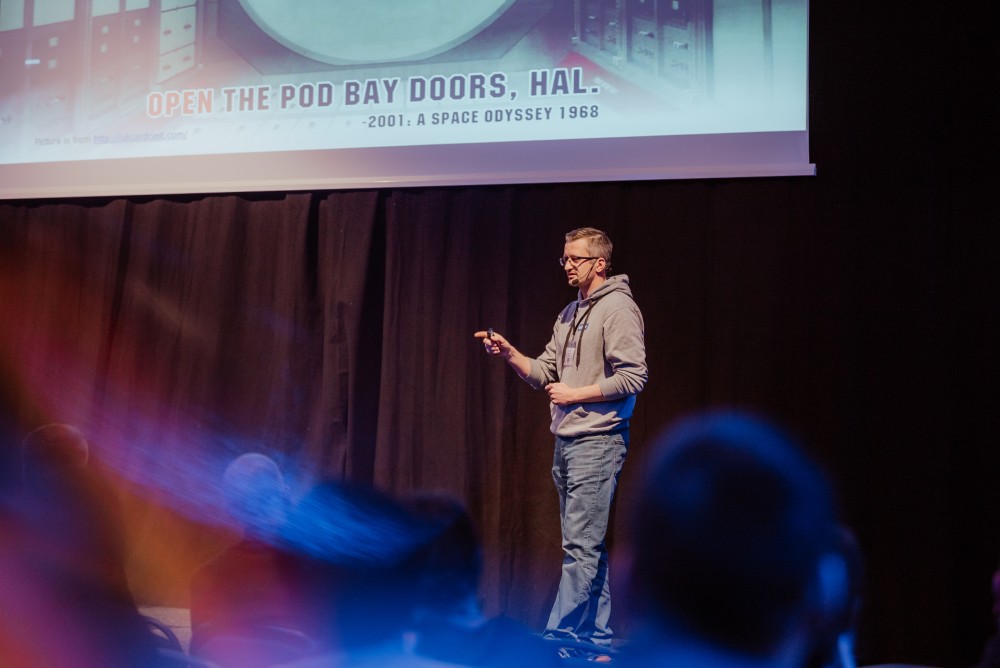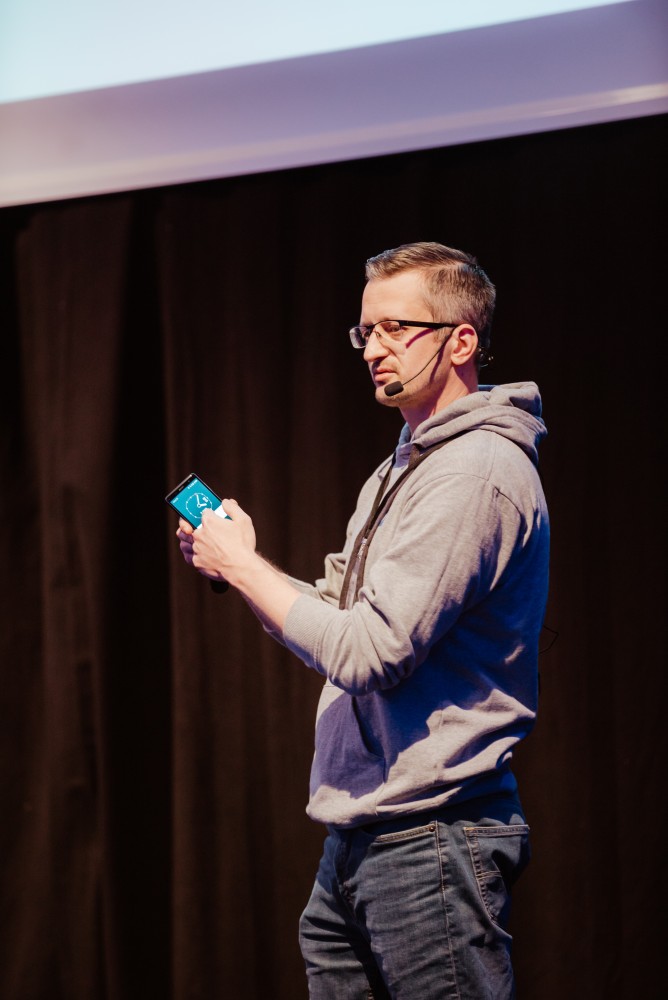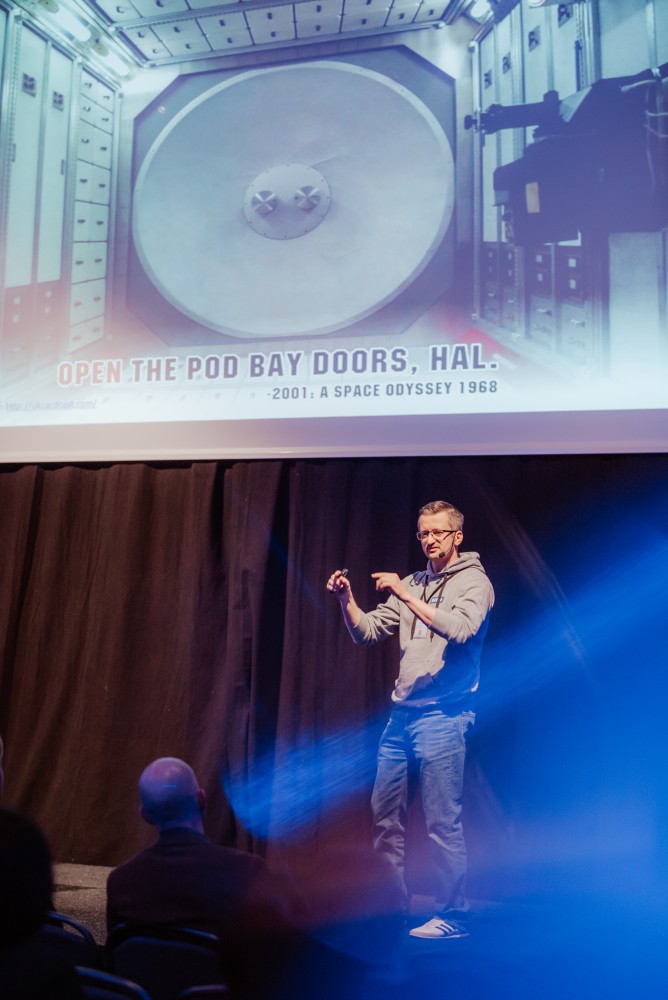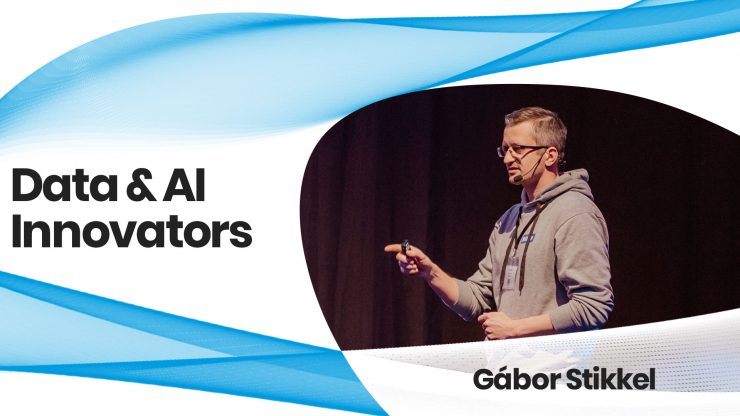Data Innovation Summit turns five next March. Along the way, we have had fantastic speakers unselfishly sharing their knowledge on stage with their peers. Without them, this journey would be impossible.
This interview is part of an interview series dedicated to humanising Data and AI innovation and celebrating speakers who have presented at the Data Innovation Summit. The emphasis lies on the Data/AI people/practitioners, their professional journey and their stories.
The prolific career of a data scientist can have its roots in an innocent child’s dream to predict soccer results. Or at least that was the case for Gábor Stikkel, an accomplished Senior Data Scientist at HID Global and speaker at the Data Innovation Summit 2019.
His thought-provoking presentation on seamless access with gesture recognition drew us to talk to him on the subject and discover how the field is progressing almost a year after his talk. But Gábor’s vision for AI in access control is not limited to the Earth. Let’s just say we are in safe hands if we one day have to leave our planet on a spaceship.


Hyperight: Hi Gábor, it’s great to have you with us today and have the chance to talk to you. To refresh our memories and introduce yourself to our readers, please tell us a bit about yourself and the company you are coming from.
Gábor Stikkel: Dear Ivana, thank you for having me! To motivate our Cloud Services management team at HID for the presentation on DIS2019, I flagged the event as the largest analytics conference in the Nordics and I can only repeat that here: you are doing a great job of creating a vibrant community around data and AI.
For me, it all started around the age of 12 when I tried to predict soccer game results with hand-crafted decision trees on the Commodore platform. Since then I was chasing my childhood dreams, one of them is to lead a sizeable software project which became a reality while working at Ericsson.
In 2011, my former manager and all-time buddy, Sándor Albrecht sent over a McKinsey report on Big Data the next frontier for innovation. Reading that through I realized that I need to transform myself to this field as it was the reason I wanted to become an applied mathematician: solve problems of large companies by applying some kind of math using data.
Soon after, I approached one of your DIS2020 speakers, namely Simon Moritz (at the time working for Ericsson Research) to give me a thesis work kinda job to be able to get back to applied math and Big Data analytics. I’m still grateful to him and the company that I could refocus my carrier onto the field of machine learning.
After a few years of adventures in various telecom data lakes and a number of predictive models my current manager, Johan Eliasson approached me with problems related to seamless access – the holy grail of physical access control. I could not resist joining HID Global (part of the Assa Abloy Group) to work on these interesting problems of gestures recognition on smartphones and indoor positioning based seamless access. Our company has a vision that in the near future data-driven innovations will enable us to develop door opening solutions that require no explicit user interactions still providing the required security standards. That is seamless access.
I feel privileged to work with such an innovative team with many data-giving volunteers without whom I could not make it to the DIS2019 IoT stage.


Our company has a vision that in the near future data-driven innovations will enable us to develop door opening solutions that require no explicit user interactions still providing the required security standards.
Hyperight: Next year we are celebrating our 5th anniversary. A lot has changed with data and advanced analytics during these 5 years. From your point of view, where do we see the biggest changes and advancements with AI and data we have had?
Gábor Stikkel: Five years is a lot of time: on our internal technology seminars we tease people bringing articles that are older than a year. Anders Arpteg in his interview here on Hyperight Read summarized well the key deep learning advances in vision and natural language processing. Being a big fan of decision tree-based approaches, I have to highlight the boost they have gotten recently in the very same timeframe.
Literally, since the appearance of XGBoost in 2016 boosted decision tree-based approaches have been dominating data science competitions on Kaggle and they provide an extremely powerful tool to many of the typical enterprise machine learning problems like churn prediction, upsell/cross-sell modelling, anomaly or fraud detection as well as human activity recognition.
Boosted decision trees also excel from an energy-efficiency point of view: in practice, they are a number of if-then-else statements that can be evaluated very fast and have a moderate memory footprint. These properties make them very attractive not only for enterprise ML problems but for resource-constrained environments too.
Model explainability has also gotten a lot of attention lately. It is not only necessary for regulatory purposes like the right to explainability but can support ML practitioners to understand, troubleshoot and eventually improve their models. The Shapley additive explanations proposed by Scott Lundberg’s team is a great tool for that – just to name one. If you look into it a bit deeper you will see a Nobel prize-winning idea from economy/game theory getting applied in the context of feature importance. For an applied mathematician it is not only practical but beautiful too.
Hyperight: In your presentation From Newton to Machine Learning: Gesture Recognition in Access Control, you explained a machine learning model you worked on that is used in gesture recognition for accessing and how it can improve the user experience of opening a door by predicting user behaviour. But as you stated, people are unpredictable and often invent all sorts of gestures. How do you deal with the human factor in the ML model?
Gábor Stikkel: Very good and hard question. If you give users too much freedom they will use it to their comfort. Many solutions in our industry are trade-offs between user experience and security. Introducing a machine learning-based gesture recognizer is no exception: you can make the feature more secure that reduces the number of false positives, however, some of the users need to change the way they were twisting their phones to open doors. One thing we can do is to proactively communicate the changes we are planning to introduce.
Hyperight: Are you still dealing with the same challenges working with sensor data? Or perhaps advances in technology helped eliminate them and created new ones?
Gábor Stikkel: Partly yes: we are adding a new gesture to our recognizer that will be part of one of the coming releases of the Mobile Access SDK.
On the other hand, new types of sensors like radar and ultra-wideband positioning are increasingly seen in cars and mobile phones, these will likely play a role in the future of gesture recognition and intent detection. ASSA ABLOY is actively working on the introduction of new sensors into physical access control, for instance through the FiRa (Fine Ranging) standardization body.”


Hyperight: Talking about the decade to come, where do you see gesture recognition in 2030?
Gábor Stikkel: I truly believe many of the proofs-of-concept and first product versions will get mature by 2030. Most of the seamless access use cases (let it be face recognition or indoor positioning based) will be implemented and widely used. Robustness of these models will be thoroughly tested by all different kinds of adversarial attacks. And within 10 years, you never know what kind of new crazy ideas will spark from one of our innovation workshops.
If we look at it from a bit broader perspective – Pete Warden from Google has an interesting view: he thinks the future of ML is tiny. He refers to use cases like small voice interfaces one can order a beer in a bar without calling for a waiter, image sensors that can detect crop pests or weeds. If we look at some of the innovations from Sweden we can mention smart steering wheels that can detect if the driver is not holding it properly or low-energy consumption cameras that can sense and report road traffic without recording video. It seems to resonate well with Robert Luciani’s view he shared here on Hyperight Read when it comes to becoming better at squeezing AI capabilities into low-power devices. For all these use cases one has to develop a rather accurate model that can be operated with a small amount of energy. This makes the whole field of energy-efficient ML super exciting!
If you allow me I’d go a bit beyond 2030. Humanity will need to leave Earth in the next couple of billion years. If we miss taking care of our planet it will happen much sooner. Anyhow, space tourism will certainly become a thing in the future. We are going to be developing access control systems for spaceships just like the one you can see in 2001 Space Odyssey. If it will happen in our lifetime I can promise it’ll be a better user experience that we can demo to you in…let’s say DIS2060.















Add comment